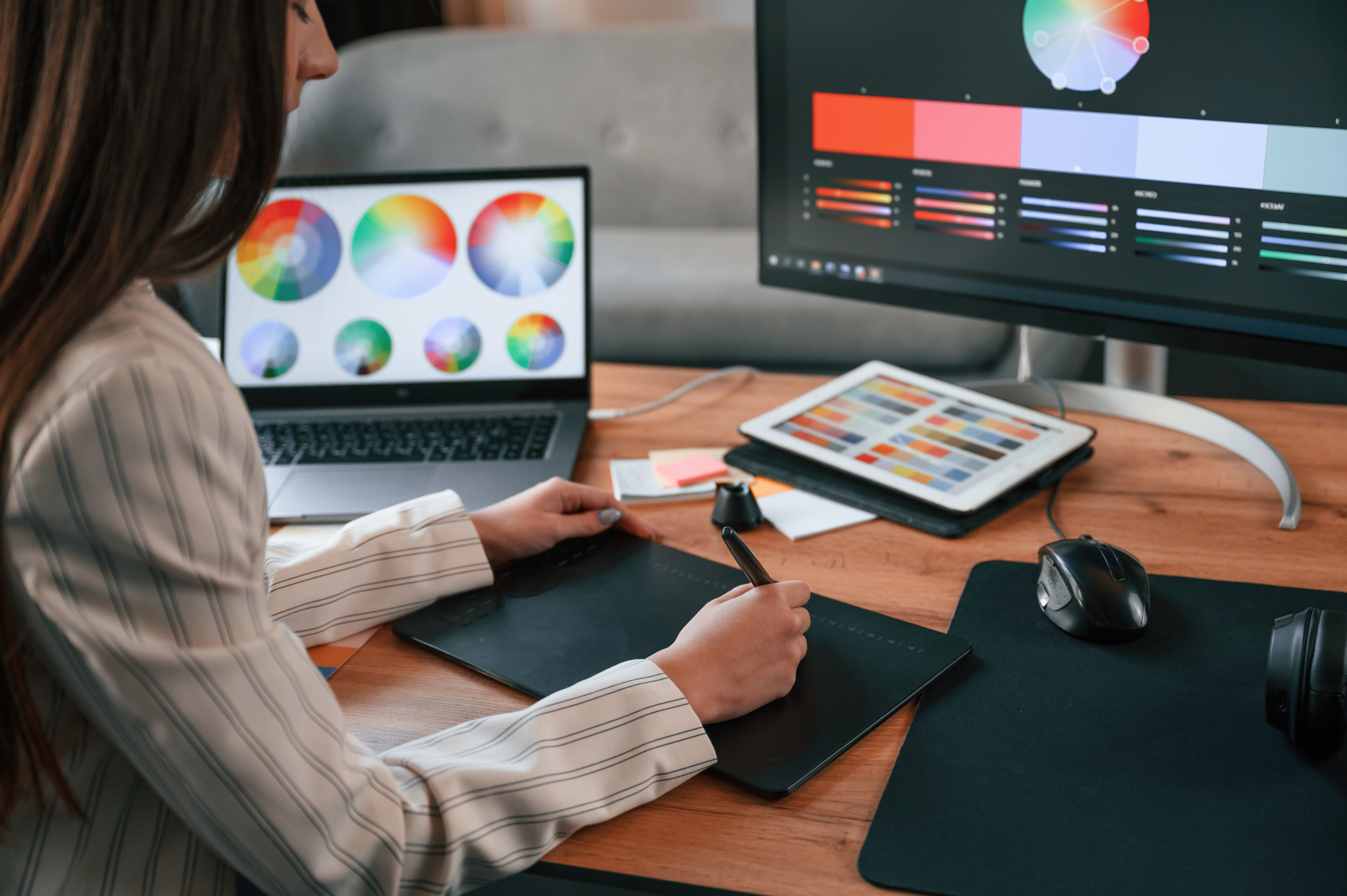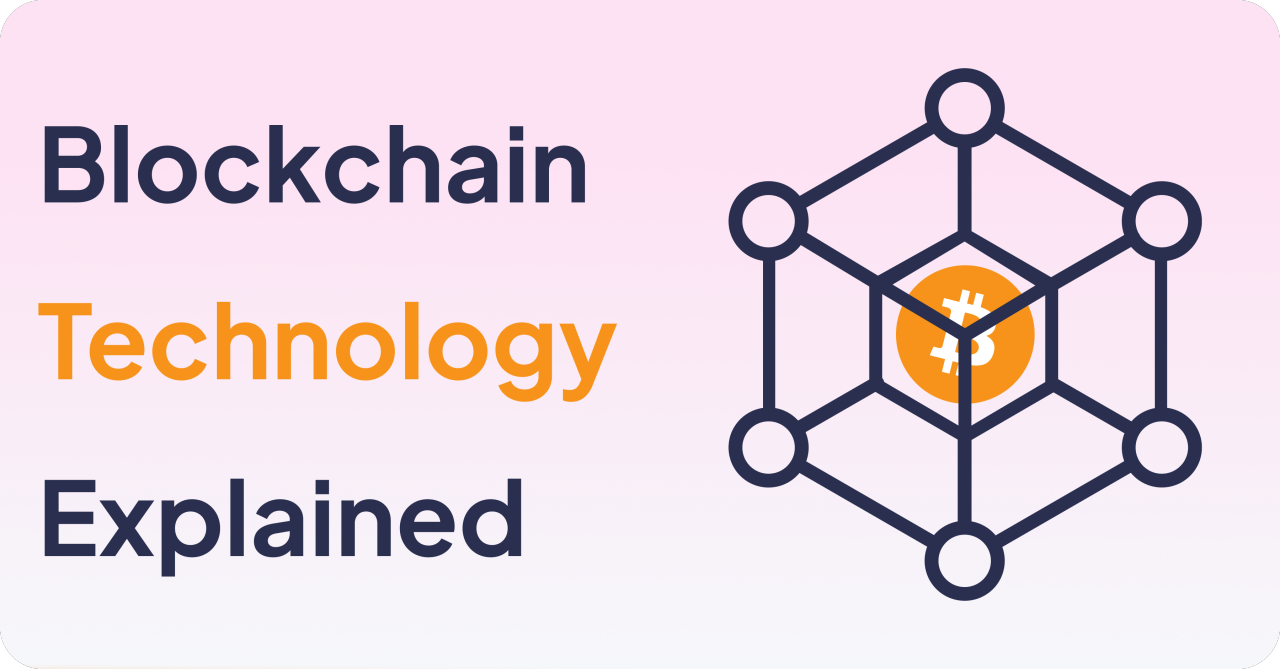As we step into 2024, the landscape of graphic design continues to evolve, with artificial intelligence (AI) playing a pivotal role in this transformation. Freelancers in the graphic design industry are uniquely positioned to benefit from the array of AI tools that promise to streamline workflows, boost creativity, and enhance client relations. This guide explores the essential AI tools that are reshaping graphic design, offering insights into how these technologies can be integrated into your freelancing toolkit.
The Importance of AI in Graphic Design
The advent of artificial intelligence (AI) in the graphic design industry marks a transformative era, redefining creativity, efficiency, and innovation. AI's role in graphic design is multifaceted, impacting everything from conceptualization to final production, fundamentally changing how designers approach their craft. This transformation is not just about automating mundane tasks but about enhancing the creative process, allowing designers to explore new realms of creativity and deliver more personalized, impactful designs.
How AI is Transforming the Graphic Design Industry
- Enhancing Creativity: AI tools offer graphic designers a platform to experiment with unprecedented creative solutions. By leveraging AI's capability to analyze and learn from vast datasets, designers can explore combinations of colors, fonts, and layouts that they might not have considered otherwise. This leads to more innovative designs that can push the boundaries of conventional aesthetics.
- Boosting Efficiency: AI significantly reduces the time spent on repetitive and time-consuming tasks. From auto-generating basic design elements to simplifying revisions and adjustments, AI allows designers to focus more on the creative aspects of their projects. This efficiency not only speeds up the design process but also helps meet tight deadlines, a common challenge in the design world.
- Personalization at Scale: One of the most promising aspects of AI in graphic design is its ability to personalize designs at a large scale. For brands, this means being able to offer customers uniquely personalized experiences, from customized marketing materials to tailored product recommendations, all designed with AI's help.
- Improved Collaboration: AI tools facilitate better collaboration among design teams and between designers and clients. With features like real-time suggestions, automated feedback loops, and version control, AI platforms are making it easier for teams to work together seamlessly, regardless of physical location.
Examples of Tasks AI Can Streamline for Graphic Designers
- Automated Layout and Composition: AI tools can automatically generate layout proposals based on best design practices and the specific content involved, significantly reducing the time required to create initial drafts.
- Image Editing and Manipulation: Tasks such as background removal, color correction, and object manipulation can be performed with just a few clicks, thanks to AI. This not only speeds up the editing process but also ensures high-quality results.
- Typography and Font Selection: AI can analyze a project's context and suggest font pairings and typography settings that enhance readability and aesthetic appeal, making the selection process easier and more efficient.
- Content-Aware Design Elements: AI-driven tools can generate design elements that are contextually aligned with the content of the project. For instance, generating graphics, icons, and illustrations that match the theme and tone of a project.
- Predictive Design: By analyzing past trends and current preferences, AI can predict future design trends, helping designers create forward-thinking projects that resonate with tomorrow's audiences.
AI-Powered Design and Illustration Tools
Adobe Illustrator
Adobe Illustrator is a cornerstone in the world of graphic design, known for its powerful vector design capabilities. With the introduction of AI features like auto-trace and color palette suggestions, Illustrator has further solidified its position as an essential tool for professionals and freelancers alike.
Best Features:
- Auto-Trace: This feature revolutionizes the way images are converted into vector graphics. By automatically tracing the outlines of an image, it simplifies the process, saving time and ensuring precision in vectorization.
- Colour Palette Generation: Illustrator's AI analyses images or themes to suggest color schemes, making it easier for designers to choose harmonious colors for their projects. This not only enhances creativity but also ensures color combinations are visually appealing.
Limitations:
- The richness of features and capabilities in Illustrator can pose a learning curve for new users, requiring time to master.
- Illustrator operates on a subscription-based pricing model, which may not be suitable for all users, especially freelancers or small businesses on tight budgets.
Pricing
Adobe Illustrator is available through a monthly subscription fee, with different pricing tiers based on the Adobe Creative Cloud package selected.
Website: https://www.adobe.com/products/illustrator.html
CorelDRAW
CorelDRAW is renowned for its robust AI-assisted design capabilities, offering a suite of tools that cater to both vector illustration and layout needs. Its AI features, such as bitmap-to-vector tracing and the LiveSketch tool, make it a compelling choice for designers looking for versatility and precision.
Best Features:
- AI-Powered Bitmap-to-Vector Tracing: This feature automates the conversion of bitmap images to vector format, streamlining the process for designers. It's particularly useful for digitizing sketches or logos with high efficiency.
- LiveSketch Tool: Leveraging AI, the LiveSketch tool transforms freehand sketches into precise vector graphics in real-time. This allows designers to capture their ideas digitally in a more natural and intuitive way, closely mimicking the act of sketching on paper.
Limitations:
- CorelDRAW's comprehensive suite comes with a high cost, which may be a significant investment for individual freelancers or small studios.
- The platform's wide array of features and tools can be complex for beginners, requiring a commitment to learning and adaptation.
Pricing
CorelDRAW offers flexible pricing options, including a one-time purchase for those who prefer to avoid recurring costs, or subscription options for those who wish to stay up-to-date with the latest features and updates.
Website: https://www.coreldraw.com/en/
AI Tools for Image Editing and Manipulation
Photoshop
Adobe Photoshop is a titan in the world of digital image editing, with its comprehensive suite of tools catering to a wide range of needs from basic photo editing to complex digital art creation. The introduction of AI features has further augmented its capabilities, making it an even more powerful tool for professionals.
Best Features
- Content-Aware Fill: This feature magically removes unwanted elements from photos, seamlessly filling the space with content that matches the surrounding area. It's incredibly useful for cleaning up images or removing distractions.
- Neural Filters: Photoshop's Neural Filters allow users to apply complex edits and effects with just a few clicks. From enhancing portraits to adding artistic effects, these filters leverage AI to simplify tasks that would traditionally take much longer to complete manually.
Limitations
- Photoshop is available only through a subscription to Adobe's Creative Cloud, which may not be ideal for everyone, especially those on tight budgets.
- Due to its extensive features and capabilities, Photoshop has a steep learning curve, requiring significant time investment to master.
Pricing
Photoshop is offered through various Creative Cloud subscription plans, available on a monthly or annual basis, with pricing varying based on the package chosen.
Website: https://www.adobe.com/products/photoshop.html
Luminar AI
Luminar AI focuses on automating photo editing processes to make high-quality editing accessible and efficient for everyone, from professionals to hobbyists. Its AI-driven approach is designed to enhance photos with minimal effort, streamlining workflows and inspiring creativity.
Best Features
- AI Sky Replacement: Change the sky in your photos with just a click. This feature realistically alters the sky in images, matching the lighting and perspective, perfect for landscape and real estate photography.
- AI Skin Enhancer: Automatically retouches the skin in portraits, smoothing imperfections while preserving natural textures. It's a time-saver for portrait photographers looking to enhance their subjects without the manual labor of traditional retouching.
Limitations
- While Luminar AI excels in automating many editing tasks, it may lack some of the functionality required for more complex editing projects that require fine manual control.
- The performance of Luminar AI can vary depending on the hardware, with more advanced features requiring higher-end computers to function smoothly.
Pricing
Luminar AI is available as a one-time purchase, making it an attractive option for those who prefer to avoid subscription fees.
Website: https://skylum.com/luminar-ai/kazu
AI for Typography and Font Design
Fontjoy
Fontjoy leverages AI to simplify the process of font pairing, a task that traditionally requires a keen eye for design and a deep understanding of typographic harmony. Its AI capabilities help both novices and seasoned designers by suggesting complementary font pairings, making the design process faster and more intuitive.
Best Features
Font Pairing Generator: The core of Fontjoy's offering, this feature uses AI to suggest font pairings based on compatibility and aesthetic harmony. It allows users to lock in a font they like and then generates combinations with other fonts that complement it well, facilitating creative and visually appealing designs.
Limitations
The tool's effectiveness is limited to the fonts available in its database. While extensive, this database might not include every possible font a designer might wish to use, potentially limiting options for some projects.
Pricing
Fontjoy is free to use, making it an accessible tool for designers of all levels looking to enhance their typography game.
Website: https://fontjoy.com/
DeepFont
DeepFont stands out in the typography tool landscape with its AI-driven font recognition and suggestion system. It caters to the need for identifying fonts from images—a common requirement for designers working on branding, web design, and other projects where matching fonts is essential.
Best Features
- Font Recognition: DeepFont's AI analyzes images and identifies fonts, providing designers with the exact name or closest matches. This feature is invaluable for replicating or drawing inspiration from existing designs.
- Font Suggestions: Beyond simple recognition, DeepFont offers suggestions for similar fonts. This is particularly useful when the identified font is not available, or a designer seeks alternatives that maintain the original vibe of their project.
Limitations
- The accuracy of font recognition can vary depending on the quality of the image provided. Blurry or low-resolution images might yield less accurate results, affecting the tool's usefulness in certain situations.
- Pricing for DeepFont varies based on usage and API calls, which may add a cost barrier for freelancers or small studios on tight budgets.
Pricing
The cost of using DeepFont varies based on the level of usage and the number of API calls, catering to both casual users and businesses with higher demands.
Website:
AI Tools for Color Scheme Generation
Coolors
Coolors is a widely-used tool that leverages AI to generate color schemes instantly. Whether you're starting from scratch or have a specific hue in mind, Coolors simplifies the process of finding the perfect palette for your design project.
Best Features
- Automatic Color Scheme Generator: With just a few clicks, Coolors creates color palettes based on chosen hues or generates them randomly for inspiration. This feature is particularly useful for overcoming creative blocks and discovering unexpected color combinations.
- Adjust and Refine: Once a palette is generated, Coolors allows for fine-tuning. Designers can adjust shades, saturation, and brightness to tailor the AI-generated palette to their specific needs, ensuring the final selection perfectly fits the project at hand.
Limitations
- While Coolors is highly effective in generating color schemes, the results may not always precisely match the specific requirements of a project without manual adjustments.
Pricing
- Coolors offers a free basic version, making it accessible to designers at all levels. Premium features are available for those seeking additional functionality, with pricing details provided on their website.
Website: https://coolors.co/
Khroma
Khroma stands out by utilizing AI to learn and utilize user color preferences to generate unlimited, personalized color palettes. This innovative approach ensures that the palettes not only look great but also resonate with the designer's unique style and preferences.
Best Features
- AI Learns Your Preferences: By selecting your favorite colors, Khroma's AI learns your preferences and generates palettes tailored to your tastes. This personalization makes it easier to find colors that you're likely to love and use in your projects.
- Unlimited Palette Generation: OKhroma offers the ability to generate an endless number of color combinations, ensuring you'll never run out of inspiration. This feature is invaluable for designers who constantly seek fresh and unique palettes.
Limitations
- Khroma requires several interactions to effectively learn and adapt to your color preferences, meaning its full potential is unlocked over time rather than immediately.
Pricing
- Khroma is free to use, making it an excellent tool for designers who value personalized color recommendations without any associated costs.
Website: https://www.khroma.co/
AI Tools for Logo Design
Looka
Looka combines AI technology with user preferences to create custom logos that resonate with the brand's identity. This innovative approach allows for a personalized design process, making it easier for users to get professional-quality logos without the need for extensive design skills.
Best Features
- Custom Logo Creation: Looka's AI generates logos based on selected styles, colors, and symbols input by the user, offering a bespoke design experience that aligns with the brand's vision.
- Brand Kit: In addition to logo creation, Looka provides a full suite of branding materials, including business cards, letterheads, and social media assets, ensuring a consistent brand identity across various touchpoints.
Limitations
While Looka's AI is capable of producing high-quality designs, the logos may require further customization to ensure uniqueness and fully capture the brand's essence.
Pricing
Looka offers flexible pricing options, including pay-per-logo for those needing a one-off design, or subscription plans that provide access to additional branding materials and features.
Website: https://looka.com/
Tailor Brands
Tailor Brands features an AI-driven platform designed to streamline the logo creation and brand identity development process. By answering a brief questionnaire about brand preferences, users can receive a customized logo and a suite of branding solutions, simplifying the journey from concept to brand.
Best Features
- Easy Logo Creation: The AI at Tailor Brands crafts logos based on the user's responses to a series of questions about their brand, ensuring the final design aligns with their vision and preferences.
- Full Branding Solution: Beyond just logos, Tailor Brands offers a comprehensive set of branding tools, including business cards, social media kits, and more, helping businesses establish a cohesive and professional brand identity.
Limitations
- Full access to Tailor Brands' features and branding solutions requires a subscription, which may not suit all users or small businesses on a tight budget.
Pricing
Tailor Brands provides various subscription levels to accommodate different business needs and budgets, making it a versatile option for startups and established companies alike.
Website: https://www.tailorbrands.com/
AI Tools for 3D Design and Animation
Blender
Blender is a powerhouse in the realm of 3D modeling, animation, and rendering, celebrated for its comprehensive suite of tools that cater to a wide range of creative projects. Its integration of AI, particularly in rendering and motion capture, significantly enhances efficiency and quality, making it a go-to choice for professionals and enthusiasts alike.
Best Features
- AI-Powered Rendering: Blender utilizes AI denoising techniques to speed up the rendering process without compromising on quality. This feature is particularly beneficial for complex scenes, reducing the time needed to produce clean, noise-free renders.
- Motion Capture Correction: AI algorithms in Blender analyze motion capture data, automatically correcting and enhancing it. This improves the realism and accuracy of animations, saving time and effort in post-production.
Limitations
Blender's vast array of features and capabilities can present a steep learning curve for beginners. However, a robust community and a wealth of online resources are available to help users climb this curve.
Pricing
Blender is open-source and completely free to use, making it an accessible tool for individuals and studios of all sizes.
Website: https://www.blender.org/
Adobe After Effects
Adobe After Effects is a leading software for visual effects and motion graphics, offering powerful tools for video post-production. Its AI features, like the Content-Aware Fill and Roto Brush, push the boundaries of what's possible in video editing, automating complex processes to enhance creativity and productivity.
Best Features
- Content-Aware Fill for Video: This tool automatically removes unwanted objects from video clips, saving editors countless hours of manual work. Whether it's erasing a passerby from a shot or removing a piece of equipment, Content-Aware Fill handles the task with precision.
- Roto Brush 2: Leveraging AI, the Roto Brush 2 simplifies the process of separating foreground elements from backgrounds in videos. This is especially useful for applying effects or color correction to specific parts of a scene, making the task much faster and more accurate.
Limitations
Access to Adobe After Effects requires a subscription to Adobe Creative Cloud, which might not fit within everyone's budget, especially freelancers or small studios.
Pricing
Adobe After Effects is available as part of the Adobe Creative Cloud subscription, with various pricing plans to suit different user needs and budgets.
Website: https://www.adobe.com/in/products/aftereffects.html
AI Tools for UX/UI Design
Adobe XD
Adobe XD is a powerful tool for designing and prototyping user experiences and interfaces, offering a seamless workflow for UX/UI designers. Its AI-driven features, such as Auto-Animate and Repeat Grid, empower designers to create dynamic prototypes and repetitive design elements with ease, enhancing the overall design process.
Best Features
- Auto-Animate: Adobe XD's Auto-Animate feature allows designers to create animations between artboards, simulating interactions such as button clicks or screen transitions. This brings prototypes to life, providing a more accurate representation of the final product.
- Repeat Grid: The Repeat Grid feature is a significant time-saver, enabling designers to duplicate items such as lists or gallery components quickly. AI assists in maintaining consistent spacing and alignment, ensuring a polished look with minimal effort.
Limitations
Adobe XD is most beneficial for users already integrated into the Adobe ecosystem, leveraging seamless integration with other Adobe Creative Cloud apps. This might limit its appeal to those not using Adobe products.
Pricing
Adobe XD is available as part of the Adobe Creative Cloud subscription, with various plans catering to individual and business needs.
Website: https://helpx.adobe.com/xd/get-started.html
Figma
Figma stands out as a collaborative interface design tool that incorporates AI to enhance efficiency and foster innovation in UX/UI design. Its cloud-based platform facilitates real-time collaboration among team members, while AI-powered features like Auto Layout and Design Systems streamline the design process and ensure consistency.
Best Features
- Auto Layout: Figma's Auto Layout uses AI to automatically adjust and scale designs as components are added or modified. This dynamic adjustment saves time and ensures that designs remain responsive and adaptable to different screen sizes.
- Design Systems: With the help of AI, Figma enables teams to maintain consistency across designs through scalable components and styles. This is crucial for creating cohesive user experiences and ensures that design elements are reusable across projects.
Limitations
The extensive features and capabilities of Figma can be overwhelming for new users, requiring a learning curve to fully leverage the platform's potential.
Pricing
Figma offers a free version for individuals, making it accessible for freelance designers and small projects. Subscription plans for teams provide additional features and collaboration tools, catering to larger organizations and projects.
Website: https://www.figma.com/
Conclusion
The integration of AI into graphic design tools represents a significant leap forward for the industry, offering freelancers the opportunity to enhance their creativity, efficiency, and competitiveness.
By embracing these AI tools, graphic designers can unlock new potentials in their work, delivering innovative and impactful designs that meet the evolving demands of the market.
FAQs
1. What are the best AI tools for beginners in graphic design?
For beginners, tools like Adobe Illustrator for vector graphics, Photoshop for image editing, and Canva for overall design offer user-friendly interfaces and AI-assisted features that simplify the design process.
2. Can AI tools help with the logo design process, and if so, how?
Yes, AI tools like Looka and Tailor Brands can significantly streamline the logo design process by generating custom logos based on user preferences, styles, colors, and symbols, making branding easier for freelancers.
3. What are the key features to look for in an AI tool for UX/UI design?
Key features include auto-animate for simulating interactions, repeat grid for maintaining spacing and alignment, and design systems for ensuring consistency across designs.
4. Can AI tools replace human graphic designers, or do they serve as assistants?
AI tools serve as assistants, enhancing the efficiency and creativity of human designers rather than replacing them. They automate repetitive tasks and offer innovative solutions, allowing designers to focus on the creative aspects of their work.
5. How do AI tools handle complex design tasks compared to traditional methods?
AI tools can handle complex design tasks more efficiently by automating certain processes, such as image editing, font pairing, and color scheme generation. However, they still require human oversight for creative direction and final adjustments.





